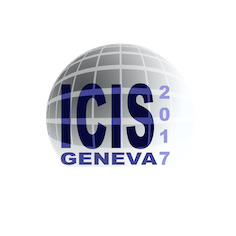Speaker
Description
Today ion sources based on laser resonance ionization are well-established core techniques at the worldwide leading radioactive ion beam facilities such as CERN-ISOLDE or ISAC-TRIUMF. Ensuring both, highly efficient and element-selective ion beam production to the users, these devices in addition allow for direct laser spectroscopic investigations on exotic nuclei far off stability with lowest production yields. Recent developments comprise preeminent suppression of isobaric contaminants by spatially separating the hot atomization cavity from a clean laser – atom interaction volume. This Laser Ion Source and Trap (LIST) design permits experimental access to nuclides such as neutron-rich Po, which were formerly inaccessible due to overwhelming contamination by easily surface ionized alkaline elements [1, 2].
Yet, spectral resolution as well as the ability of isotope- or even isomer-selective ionization in these sources is limited by the Doppler broadening of atomic resonances of typically a few GHz within the hot atomic vapor. This has so far limited the possibilities for direct in-source hyperfine structure (HFS) spectroscopy to heavy elements, such as Hg, Au, Bi etc. [3]. We present an upgrade of the LIST with a perpendicular laser - atom beam interaction geometry in the RFQ structure based on robust metal mirrors, reducing the spectral linewidth far below 100 MHz FWHM. This novel PI-LIST (Perpendicular Illumination) unit was installed and tested at the RISIKO off-line mass separator at Mainz University, which, due to its resemblance in the front-end design, acts as an ISOLDE development facility. In the framework of the ECHo project [4], direct in-source high resolution studies on the HFS of the long-lived radioactive isotopes $^{163}$Ho and $^{166\mathrm{m}}$Ho were performed, using a frequency-doubled injection-locked narrow bandwidth Ti:sapphire laser [5]. These first-time laser spectroscopic investigations on the high-spin isomer $^{166\mathrm{m}}$Ho evidentiary demonstrate the applicability of the technique. The nuclear parameters µ and Qs were derived from very dense and highly complex HFS spectra, which up to now was solely object of dedicated collinear laser spectroscopic experimental beam lines like Collaps or CRIS at ISOLDE.
The novel measurement technique, its operation characteristics and the evaluation of the spectra are presented, covering also preparatory experiments on radioactive isotopes of Tc and Ac [6]. In addition, opportunities and constraints for spectroscopic on-line experiments as well as isomer-selective ion beam production under on-line conditions are derived.
References
[1] D. Fink et. al., NIM B 317 B, 417-421 (2013).
[2] D. Fink et. al., PRX 5, 011018 (2015).
[3] P. Campbell et. al., Progress in Particle and Nuclear Physics 86, 127-180 (2016).
[4] L. Gastaldo et. al., J Low Temp Phys 176:876 (2014).
[5] T. Kessler et. al., Laser Phys. 18, 842 (2008).
[6] R. Heinke et al., Hyperfine Interact 238:6 (2017)
